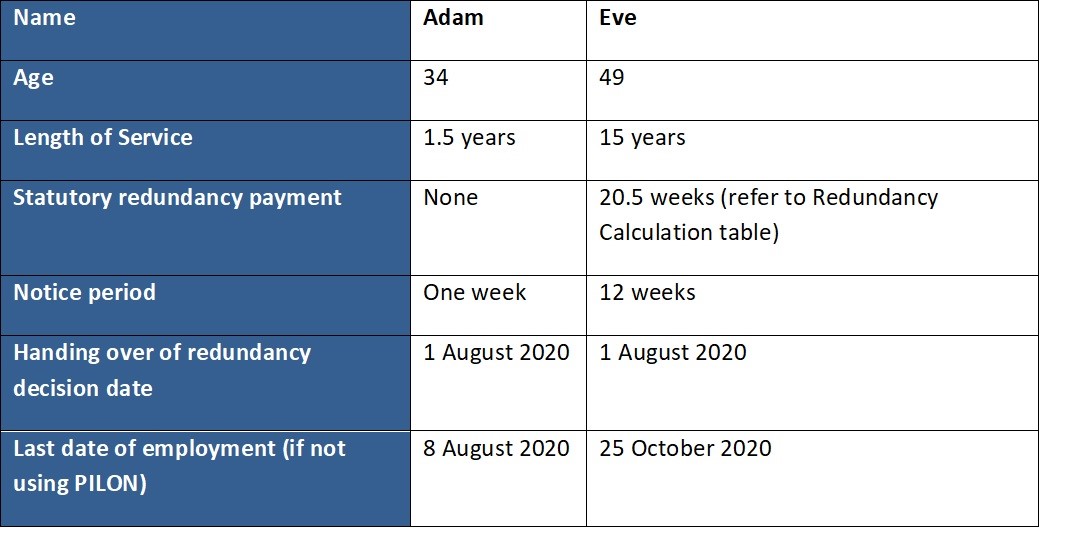Small Business Closing Employee Rights UK: Guaranteeing Fair Redundancy Pay
Wiki Article
Discovering the Operational Dynamics of Business Redundancy and Its Long-Term Sustainability

Redundancy Strategies for Business Continuity
In order to guarantee continuous procedures, companies have to carry out effective redundancy strategies for service connection. Redundancy in this context describes the replication of essential elements or features within a system to reduce the influence of potential failings. By incorporating redundancy approaches, organizations can enhance their durability against interruptions triggered by numerous variables such as all-natural catastrophes, devices failures, or cyber-attacks.
One usual redundancy method is the execution of back-up systems and information storage services. This includes producing duplicates of crucial data and systems that can be activated in instance of a primary system failure. In addition, organizations can establish repetitive interaction channels and power sources to keep connection and operations throughout unforeseen events.
In addition, cross-training staff members to perform several functions within the firm can function as a useful redundancy method. This guarantees that crucial tasks can still be accomplished even if crucial personnel are not available due to disease or various other factors. In general, effective redundancy techniques are important for organizations to maintain functional connection and decrease the influence of possible interruptions.
Impact of Redundancy on Organizational Strength
Provided the important role redundancy methods play in ensuring business continuity, exploring the effect of redundancy on business strength comes to be imperative for comprehending the holistic functional characteristics of a company. Redundancy, when tactically implemented, can significantly add to improving an organization's durability in the face of unforeseen obstacles.In addition, redundancy can boost worker morale and confidence, knowing that there are contingency plans in position to deal with unforeseen conditions. This sense of security can lead to increased productivity and a more positive workplace. Furthermore, redundancy can foster technology and imagination within a company as staff members really feel equipped to take calculated threats, recognizing that there is a safeguard to support them in case of failing. In general, the influence of redundancy on organizational resilience is extensive, shaping the long-lasting sustainability and success of a business.
Balancing Performance and Adaptability in Redundancy
Accomplishing an unified stability in between operational effectiveness and flexible adaptability is an essential difficulty in the tactical deployment of redundancy within companies. Efficient procedures are vital for keeping efficiency and cost-effectiveness, ensuring that sources are made use of optimally. Nevertheless, too much focus on effectiveness alone can result in rigidity, making it challenging for companies to adapt to unanticipated modifications or challenges. On the various other hand, adaptability enables organizations to react nimbly to advancing conditions, fostering advancement and strength. Yet, excessive versatility without a strong operational foundation can cause inadequacies and inconsistency.To stabilize efficiency and flexibility in redundancy planning, organizations have to very carefully analyze their functional requirements, market dynamics, and tactical objectives. Eventually, discovering the right balance between efficiency and adaptability is crucial for constructing a durable and lasting organization in the face of unpredictability.
Long-Term Sustainability With Redundancy Preparation
To make sure long-lasting practicality and stability, companies have to tactically straighten their redundancy planning with lasting sustainability objectives, thereby balancing operational effectiveness with flexible adaptability. Long-lasting sustainability through redundancy preparation includes greater than just temporary cost-cutting procedures. It calls for a comprehensive strategic strategy that anticipates future difficulties and possibilities. Companies ought to see redundancy redundancy pay if company goes bust not as a responsive option to instant troubles however as an aggressive approach for long-lasting success. By integrating redundancy preparation with sustainability objectives, organizations can produce a resistant structure that can endure different market variations and internal modifications.
Aggressive Measures for Sustainable Business Workflow
Exactly how can firms proactively enhance their operational sustainability for long-lasting success? Carrying out aggressive measures is vital for companies aiming to make sure lasting procedures. One crucial strategy is to buy innovation and innovation to enhance processes, lower waste, and stay affordable in the marketplace. Adopting sustainable methods such as reducing power consumption, reducing carbon impact, and maximizing resource application can not only benefit the environment but likewise cause cost savings over time.Additionally, fostering a culture of continuous renovation and knowing within the company can boost flexibility to altering market conditions and consumer needs. Urging employee participation in decision-making processes and offering possibilities for specialist growth can increase spirits, productivity, and overall performance. Developing clear goals, monitoring crucial performance indications, and consistently assessing progression are crucial components of aggressive sustainability management.
Teaming up with providers, consumers, and other stakeholders to advertise sustainable techniques throughout the supply chain can produce a causal sequence of positive effect - redundancy pay if company goes bust. By taking positive actions in the direction of functional sustainability, firms can construct durability, drive technology, and protect their long-term success in an ever-evolving business landscape
Conclusion

In the realm of organizational management, the critical deployment of business redundancy stands as an essential yet complex method that requires a fragile balance in between operational efficiency and long-term viability. By studying the operational dynamics that underpin firm redundancy and reviewing its more comprehensive effects for business strength and adaptability, a nuanced understanding of exactly how redundancy techniques can shape the future trajectory of a company starts to unravel.Given the important duty redundancy techniques play in guaranteeing company connection, exploring the effect of redundancy on business resilience ends up being critical for comprehending the holistic operational characteristics of a firm. Overall, the effect of redundancy on organizational strength is profound, shaping the lasting sustainability and success of a company.
In conclusion, recognizing the operational characteristics of firm redundancy is important for making certain long-term sustainability.
Report this wiki page